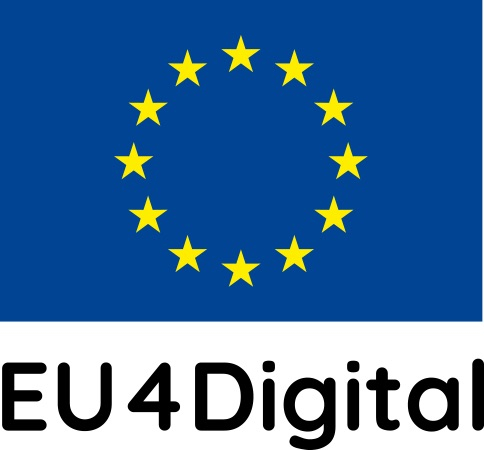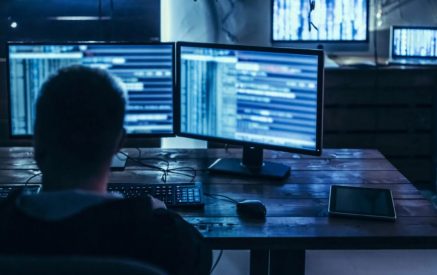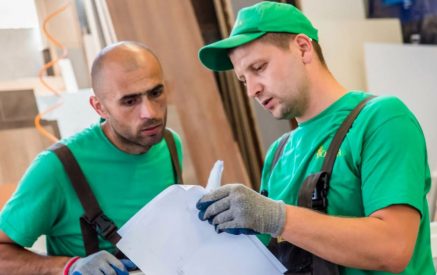Almost 300 people took part in the first ever Digital Conference for the Eastern Partnership, held virtually on 27 September, including national and EU officials, and other public and private sector stakeholders involved in the digital transformation in the Eastern Partner countries.
The conference, organised as the opening event in the EU4Digital Steering Committee meeting this week, took place at a time when the pandemic has brought digital technology to the forefront of public attention.
“Imagine for a moment life in this pandemic without digital in our lives…” European Commission President Ursula von der Leyen said in her State of the Union address last year – words quoted in her opening remarks to the Conference by Katarína Mathernová, Deputy Director-General at the European Commission’s DG NEAR, who highlighted the digital goals set by the EU in its Post-2020 Eastern Partnership priorities.
“If we want to build back better, we need to harness digital opportunities,” she said, in words that set the tone for the interventions across the day’s event.
Read also
The opening keynote speech, ‘SPEED no limits in the digital era’, was delivered by Aleksander Poniewierski, EY Global Digital & Emerging Technology Leader, IoT World Leader of the Year 2020, and author of a book of the same title.
Setting out digital as the fourth industrial revolution, Poniewierski highlighted the speed of recent technological change and the challenges that lay ahead. The digital transformation is happening now, he said, the technologies of the future are being created today, and the new generation – Generation Z – is the future customer, employee, manager and leader, representing 40% of the workforce by 2030.
Poniewierski identified Mobility, Cloud, Artificial Intelligence and the Internet of Things at the big four emerging technologies that would define the coming years, explaining how all these technologies worked in synergy.
“You may hate gravity, but gravity doesn’t care,” he quoted Clayton Christensen, the American business consultant who developed the theory of ‘disruptive innovation’, to stress that “changing mindset” was essential in successfully harnessing the digital transformation, and that innovative organisations needed the right resources, the right processes, but above all the right values to succeed.
Three prominent EU4Digital experts then highlighted the impact and priorities of the EU4Digital Facility in the key areas of Telecoms infrastructure and regulation, ICT ecosystems, and eCommerce solutions for online trade.
Andrejs Dombrovskis, EU4Digital Facility Telecom Rules Stream Leader, spoke of ‘Telecom Infrastructure: laying the foundations for the reduction of roaming retail prices, 5G and affordable high-speed internet’. He highlighted the evolution from the traditional telecoms customer in the days of fixed public service telephony to a world where “customers are becoming operators with sufficient skills to know what they want”, and where available content is now driving the use of networks.
In this fast-changing environment, Dombrovskis stressed the importance of sustainable competition models and of strong, balanced regulation, mediating between government, service providers and consumers. He identified the next steps in the Eastern partner countries as continued reviewing and strengthening of the regulatory framework, smart investment and market development for sustainable competition, promoting user empowerment by enabling usage of digital services, and monitoring broadband developments.
In his presentation, ‘The journey from the digital individual to the digital business’, Jesus Lozano, ICT Strategic Advisor at European Innovation Council and senior EU4Digital expert, examined the gap in entrepreneurial ICT ecosystems between the Eastern partner countries and comparable Eastern European countries within the EU. He then outlined the EU’s ambitious target to multiply the number of successful start-ups in the region in the decade ahead, by developing ecosystems in the areas of knowledge, capital, market and resources through government-led ecosystem builders that can create, empower and boost innovative start-ups.
One of the most visible effects of the pandemic has been to accelerate the growth in eCommerce, and the EU has now set a target to grow eCommerce between the EU and the Eastern partner countries by 50%. Walter Trezek, senior eTrade expert at the EU4Digital Facility, showed ‘How pilot eCommerce solutions can foster online trade between the EU and EaP’. He explained how EU4Digital had built on its analysis of the eCommerce value chain and challenges – namely lack of harmonisation and lack of awareness – to successfully pilot a ‘digital warehouse’ helping SMEs in the Eastern partner countries to list and sell their products on international eCommerce marketplaces, in a solution that provides a single place for sellers to enter the data needed by marketplaces, customs and delivery businesses for cross-border eCommerce.
The Conference then opened a panel discussion on ‘EDTECH: how to digitally empower 1 million EaP citizens’, bringing together Valeriya Ionan, Deputy Minister for Eurointegration at the Ministry of Digital Transformation of Ukraine, Antoaneta Angelova-Krasteva, Director Innovation, Digital Education and International Cooperation at DG EAC, Riaz Shah,
EY Partner and Global Learning Leader, creating the world’s first flexible, future focused and free MBA, Stephen Somerville, Strategic Development at Coursera for Government, and Lejla Sadiku, Innovation Lead, UNDP Regional Bureau for Europe and Central Asia.
The speakers all highlighted the importance of digital literacy in ensuring competitiveness, and highlighted best practices in the EU, internationally and at corporate level, stressing the importance of public-private partnerships. In Ukraine, Valeriya Ionan highlighted the successful ‘DIIA digital education project’ based on online edutainment series, tackling issues ranging from how to pay online bills or conduct online classes all the way to artificial intelligence. Antoaneta Angelova-Krasteva concluded the discussion by stressing the “need for collaboration between stakeholders and across sectors and borders”, and urging Eastern partners to make best use of the opportunities available under EU programmes.
“Digital is a make or break issue,” concluded Mathieu Bousquet, Head of Unit Thematic Support: An Economy that works for people, green, digital and connected, at DG NEAR, in his closing remarks at the end of the Conference. “It is a transformative process that offers opportunities to build back better. As in the realm of biodiversity, it is not the strongest of the species that survives, nor the most intelligent. It is the one that is the most adaptable to change.”
Taking stock of the results achieved under EU4Digital, he said the activities of the facility were now “reaching a level of maturity and producing tangible results” in the sectors of telecom rules, trust and security, eTrade, ICT innovation, eHealth and eGovernance. But he also stressed the bigger picture, saying these results were building a more sustainable basis for integration by reusing EU solutions and assessing against EU and global benchmarks, developing partnerships with other international organisations, and developing concrete solutions supporting the integration of Eastern partners into EU digital markets, EU value chains and EU economies.
Paraphrasing the words of Robert Schuman, he concluded: “I believe that integration into the EU Digital market will not be made all at once, or according to a single plan. It will be built through concrete achievements which first create a de facto solidarity” – something in which EU4Digital has played a vital role.
You can watch a recording of the Digital Conference for the Eastern Partnership here.
























































